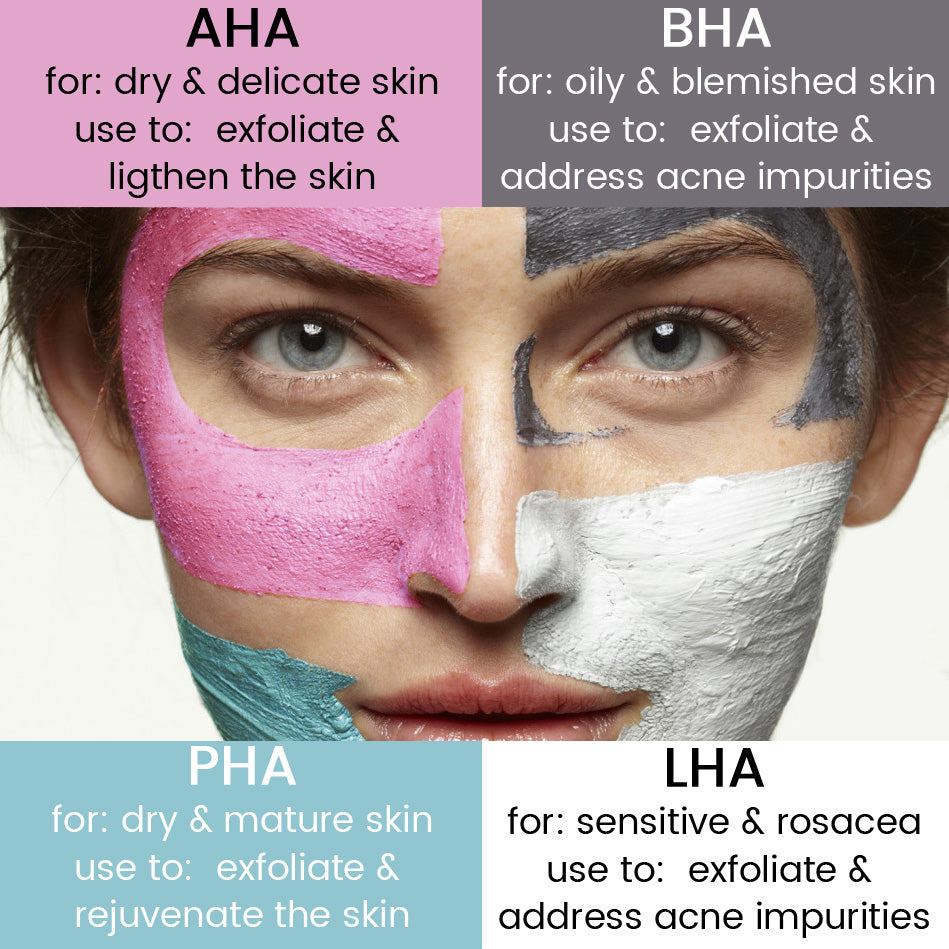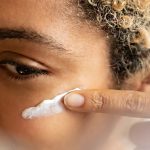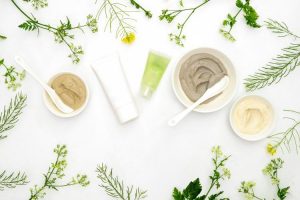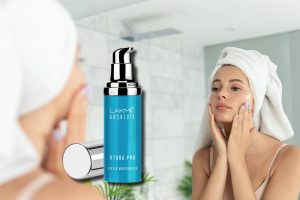
Introduction:
Exfoliation is a crucial step in any skincare routine, helping to remove dead skin cells, unclog pores, and reveal a radiant complexion. Two popular types of exfoliating ingredients are Alpha Hydroxy Acids (AHAs) and Beta Hydroxy Acids (BHAs). While both AHAs and BHAs offer exfoliating benefits, they differ in their properties and suitability for different skin types. In this article, we will explore the differences between AHAs and BHAs, helping you determine which one is best suited for your skin’s needs.
1. Alpha Hydroxy Acids (AHAs): The Skin Refiners
AHAs are water-soluble acids derived from various sources, such as fruits, milk, and sugar. They work by gently exfoliating the skin’s surface, promoting cell turnover and revealing a smoother complexion. Let’s take a closer look at the benefits and suitable uses of AHAs:
a. Gentle Exfoliation: AHAs primarily target the skin’s surface, effectively removing dead skin cells and promoting a brighter complexion. They are ideal for individuals with dry or sensitive skin who may be more prone to irritation from harsher exfoliating ingredients.
b. Improving Skin Texture: AHAs can help improve the appearance of rough skin texture, fine lines, and mild discoloration. Regular use of AHAs can lead to smoother and more even-toned skin.
c. Common AHAs: Some common AHAs include glycolic acid (derived from sugar cane), lactic acid (derived from milk), and mandelic acid (derived from almonds). Each AHA has unique properties, but all offer similar exfoliating benefits.
2. Beta Hydroxy Acids (BHAs): The Pore Purifiers
BHAs are oil-soluble acids, with salicylic acid being the most commonly used BHA in skincare products. BHAs are particularly effective in targeting clogged pores and acne-prone skin. Let’s explore the benefits and suitable uses of BHAs:
a. Deep Pore Cleansing: BHAs penetrate deeper into the pores, helping to dissolve excess sebum and unclog congested pores. They are effective in treating acne, blackheads, and whiteheads.
b. Anti-Inflammatory Properties: BHAs have anti-inflammatory properties, making them suitable for individuals with acne-prone or sensitive skin. They can help reduce redness and calm irritated skin.
c. Salicylic Acid: Salicylic acid is the primary BHA used in skincare. Derived from willow bark, it is known for its acne-fighting properties and ability to penetrate the pores effectively.
*3. Choosing the Right Acid for Your Skin
When deciding between AHAs and BHAs, it’s important to consider your skin type and concerns. Here are a few factors to keep in mind:
a. Dry or Sensitive Skin: If you have dry or sensitive skin, AHAs are a gentle option for exfoliation. They provide effective surface exfoliation without causing excessive dryness or irritation.
b. Acne-Prone or Oily Skin: BHAs, such as salicylic acid, are suitable for individuals with acne-prone or oily skin. They target clogged pores and help reduce breakouts and blackheads.
c. Combination Skin: If you have combination skin, you can consider using both AHAs and BHAs. Apply AHAs to areas where you want surface exfoliation and BHAs to areas prone to congestion, such as the T-zone.
Conclusion: Balancing Your Skin’s Needs with AHAs and BHAs
AHAs and BHAs both offer valuable exfoliating benefits, but they differ in their properties and target different skincare concerns. Understanding the differences between these two types of acids allows you to choose the one that best suits your skin’s needs.
As dermatologist Dr. Dennis Gross once said, “AHAs and BHAs are both incredible for the skin when used properly and in the right formula.” By incorporating AHAs or BHAs into your skincare routine, you can achieve a smoother, clearer, and more radiant complexion.
Remember, it’s important to start with a low concentration and gradually introduce these acids into your routine to assess your skin’s tolerance. If you have specific concerns or are unsure which acid is best for you, consulting with a skincare professional or dermatologist is always recommended.
Strike a balance between gentle exfoliation and deep pore cleansing, and let AHAs and BHAs become your allies in achieving your skincare goals.














